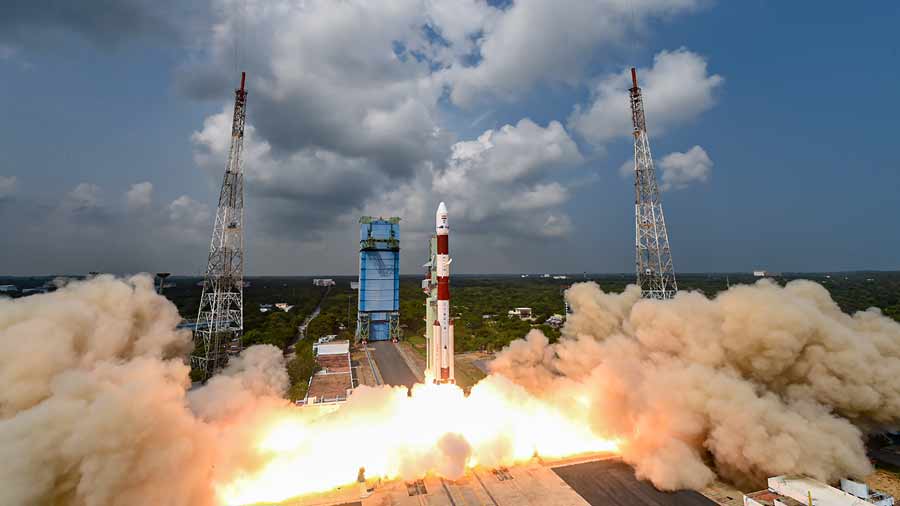A Polar Satellite Launch Vehicle of ISRO on Saturday successfully placed earth observation satellite (Oceansat) into a sun-synchronous orbit, Indian Space Research Organisation said on Saturday.
The 44.4 metre tall rocket lifted off at a prefixed time at 11.56 am from Satish Dhawan Space Centre at this spaceport at the end of a 25.30 hour countdown.
After reaching the intended orbit nearly 17 minutes after PSLV-C54 lifted off, the Earth Observation Satellite or the Oceansat successfully separated from the rocket.
In a tweet, ISRO said, "PASLV-C54/EOS-06 Mission: EOS-06 spacecraft separation is successful. The spacecraft's health is normal. The mission is continuing."
Scientists would perform lowering of the rocket to place the other co-passenger satellites into a different orbit which is expected to take place in a two-hour duration.
In his address at the Mission Control Centre, ISRO Chairman S Somanath said, "I am really happy to announce the successful accomplishment of injecting the EOS-06 (Earth Observation satellite) into the intended orbit very precisely."
"We also observed that the performance of the rocket in this mission in all stages and functions was exceedingly good. And congratulations to the entire team of PSLV for making yet another successful mission in the series of its long journey," he said.
Scientists had actually planned to launch the Earth Observation Satellite at 1,032 seconds after lift-off at 11.56 am.
The rocket successfully placed the satellite at 1,033 seconds at an altitude of about 742 kms, he added."The mission is not completed and we are waiting for the change of orbit of the upper stage along with the remaining eight satellites.
"Mission Director S R Biju said the EOS-6 satellite has been injected into precise orbit "as precisely as possible"."..it is because of the excellent team effort put in by all the team members and that is 'Team ISRO'.
Team ISRO always delivers and that is again proven here," he said.
The Earth Observation Satellite-6 is the third-generation satellite in the Oceansat series.
This is to provide continuity services of Oceansat-2 spacecraft with enhanced payload specifications as well as application areas.
The mission objective is to ensure data continuity of ocean color and wind vector data to sustain the operational applications.












